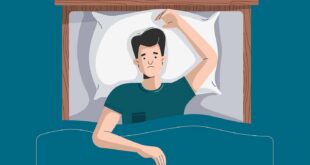Panic Disorder of anxiety.
The distinguishing feature of panic disorder is the presence of abrupt and frequently unexpected disturbances involving symptoms such as palpitations, sweating, tingling, chest pain, shortness of breath, dizziness, nausea, depersonalization, numbness, and hot flashes or chills.
Patients frequently experience fears of dying, going crazy, or behaving in an out-of-control fashion
concomitant with the physical symptoms.
The term “panic” comes from Pan, the half-human, halfgoat Greek god of the mountains and woodlands, whose unpredictable behavior was associated with mountain rumblings and unforeseen events.
The following is a typical patient’s description of a panic attack:
One day I had a real mild panic attack just standing around talking to some other people. . .
I’ll feel hot and the heat will come and go for up to like a half hour, and if it continues I’ll start getting nauseated and the nausea will come and go.
And then I get kind of shaking, and I can’t concentrate on anything.
My mind just keeps hopping and skipping all around . . . and, of course, I get worried that I’m going to vomit at an inappropriate time, and I might not be able to get away from people where they can’t
see it. . . . sometimes it stops fast . . . sometimes it goes away very slowly.
It just ends up kind of fading away before I realize it.
The patient may appear outwardly calm while experiencing such disturbances. Despite the consistent patterning and striking phenomenology of panic attacks, patients are misdiagnosed or their suffering is discounted with surprising frequency.
For instance, 40 percent or more of patients with normal coronary arteries found during angiography present evidence of panic attacks, yet such patients are rarely given this diagnosis (Beitman et al., 1987a, 1987b).
Psychotherapists, too, may fail to obtain a careful history or may view some of the symptoms, like the sense of impending doom—perhaps the most discomforting symptom to patients—as histrionic.
Treatment of panic disorder, which we will discuss later in this chapter, must begin with a careful appreciation and understanding of the symptoms.
Panic attacks are usually associated with some avoidance (Sanderson & Barlow, 1986). If the avoidance is severe, the condition is called panic disorder with extensive phobic avoidance (agoraphobia). Sometimes the presence of avoidance is difficult to discern.
For instance, an executive who had suffered panic attacks for about a year denied avoidance and appeared to be functioning normally, yet when questioned carefully, admitted that he would not drive across the Golden Gate Bridge for fear of having a panic attack.
The same patient also avoided certain staff meetings if he thought an angry encounter might take place.
Such encounters had been associated with panic attacks in the past.
 Therapy for anxiety Therapy for anxiety
Therapy for anxiety Therapy for anxiety



